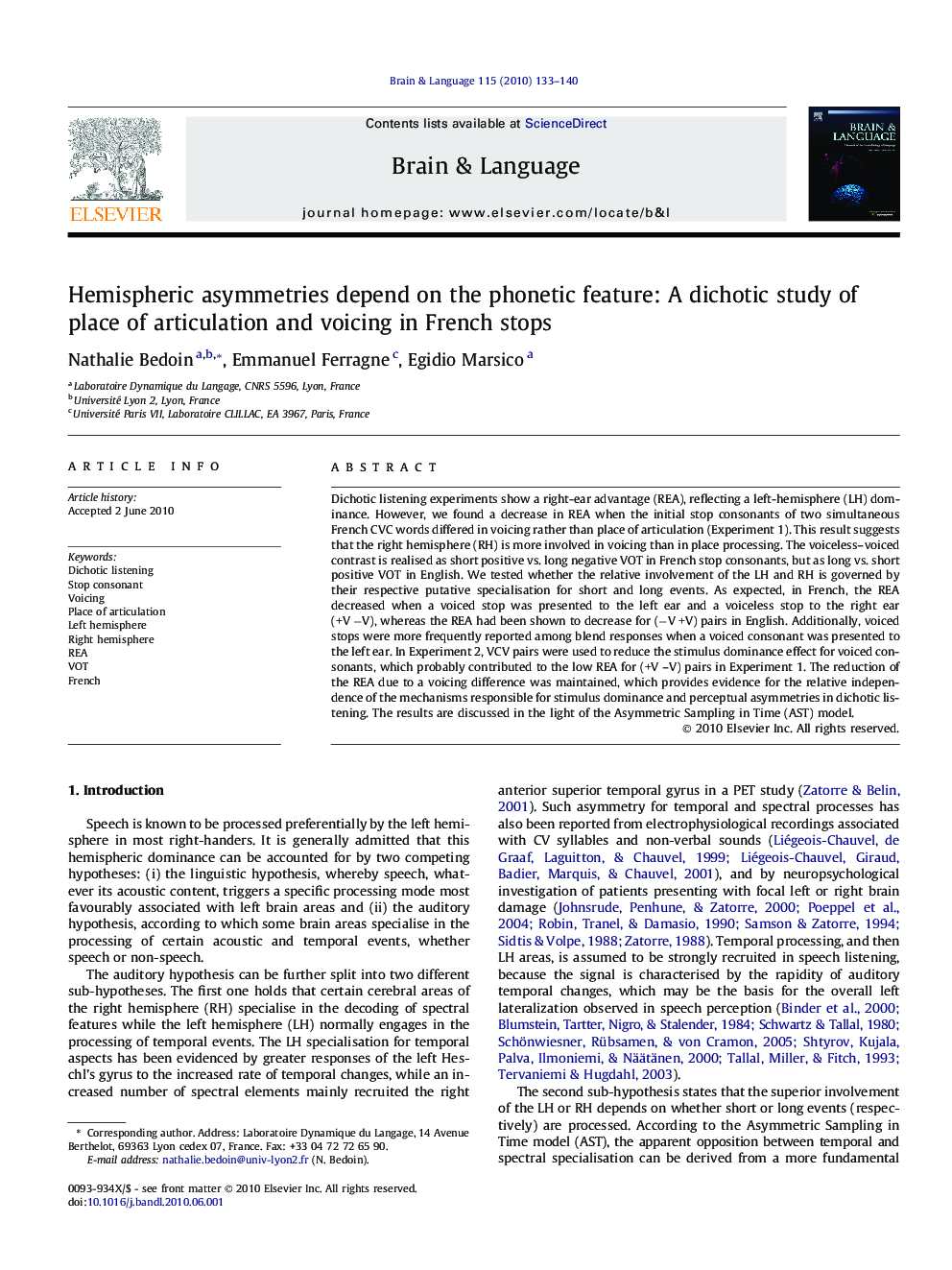| کد مقاله | کد نشریه | سال انتشار | مقاله انگلیسی | نسخه تمام متن |
|---|---|---|---|---|
| 925662 | 921517 | 2010 | 8 صفحه PDF | دانلود رایگان |

Dichotic listening experiments show a right-ear advantage (REA), reflecting a left-hemisphere (LH) dominance. However, we found a decrease in REA when the initial stop consonants of two simultaneous French CVC words differed in voicing rather than place of articulation (Experiment 1). This result suggests that the right hemisphere (RH) is more involved in voicing than in place processing. The voiceless–voiced contrast is realised as short positive vs. long negative VOT in French stop consonants, but as long vs. short positive VOT in English. We tested whether the relative involvement of the LH and RH is governed by their respective putative specialisation for short and long events. As expected, in French, the REA decreased when a voiced stop was presented to the left ear and a voiceless stop to the right ear (+V −V), whereas the REA had been shown to decrease for (−V +V) pairs in English. Additionally, voiced stops were more frequently reported among blend responses when a voiced consonant was presented to the left ear. In Experiment 2, VCV pairs were used to reduce the stimulus dominance effect for voiced consonants, which probably contributed to the low REA for (+V –V) pairs in Experiment 1. The reduction of the REA due to a voicing difference was maintained, which provides evidence for the relative independence of the mechanisms responsible for stimulus dominance and perceptual asymmetries in dichotic listening. The results are discussed in the light of the Asymmetric Sampling in Time (AST) model.
Journal: Brain and Language - Volume 115, Issue 2, November 2010, Pages 133–140